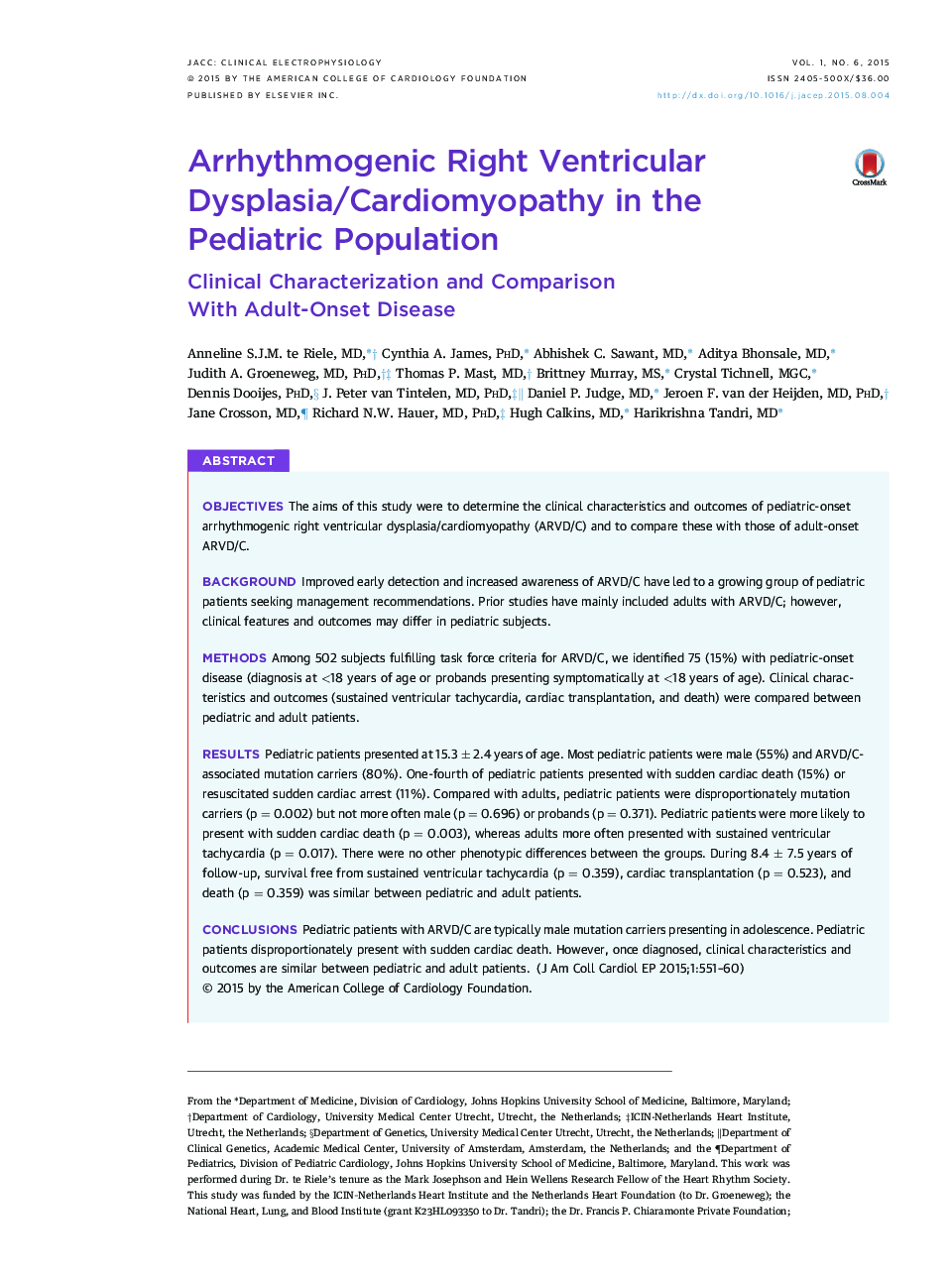| Article ID | Journal | Published Year | Pages | File Type |
|---|---|---|---|---|
| 2942272 | JACC: Clinical Electrophysiology | 2015 | 10 Pages |
ObjectivesThe aims of this study were to determine the clinical characteristics and outcomes of pediatric-onset arrhythmogenic right ventricular dysplasia/cardiomyopathy (ARVD/C) and to compare these with those of adult-onset ARVD/C.BackgroundImproved early detection and increased awareness of ARVD/C have led to a growing group of pediatric patients seeking management recommendations. Prior studies have mainly included adults with ARVD/C; however, clinical features and outcomes may differ in pediatric subjects.MethodsAmong 502 subjects fulfilling task force criteria for ARVD/C, we identified 75 (15%) with pediatric-onset disease (diagnosis at <18 years of age or probands presenting symptomatically at <18 years of age). Clinical characteristics and outcomes (sustained ventricular tachycardia, cardiac transplantation, and death) were compared between pediatric and adult patients.ResultsPediatric patients presented at 15.3 ± 2.4 years of age. Most pediatric patients were male (55%) and ARVD/C-associated mutation carriers (80%). One-fourth of pediatric patients presented with sudden cardiac death (15%) or resuscitated sudden cardiac arrest (11%). Compared with adults, pediatric patients were disproportionately mutation carriers (p = 0.002) but not more often male (p = 0.696) or probands (p = 0.371). Pediatric patients were more likely to present with sudden cardiac death (p = 0.003), whereas adults more often presented with sustained ventricular tachycardia (p = 0.017). There were no other phenotypic differences between the groups. During 8.4 ± 7.5 years of follow-up, survival free from sustained ventricular tachycardia (p = 0.359), cardiac transplantation (p = 0.523), and death (p = 0.359) was similar between pediatric and adult patients.ConclusionsPediatric patients with ARVD/C are typically male mutation carriers presenting in adolescence. Pediatric patients disproportionately present with sudden cardiac death. However, once diagnosed, clinical characteristics and outcomes are similar between pediatric and adult patients.
